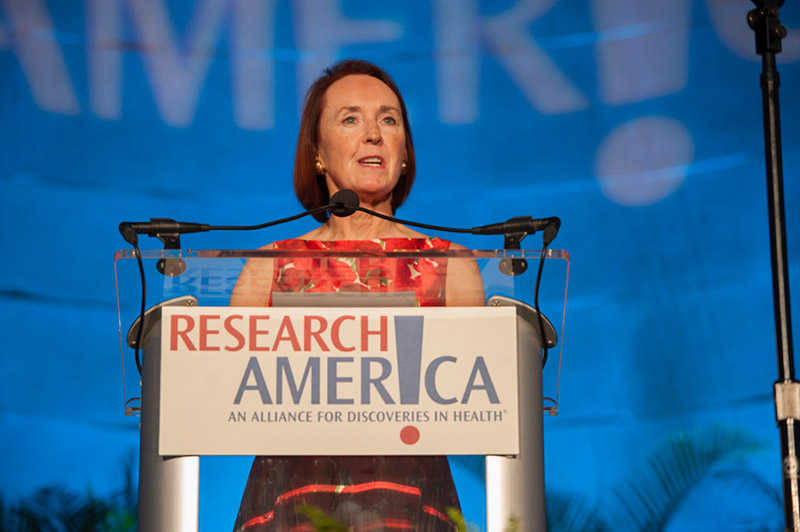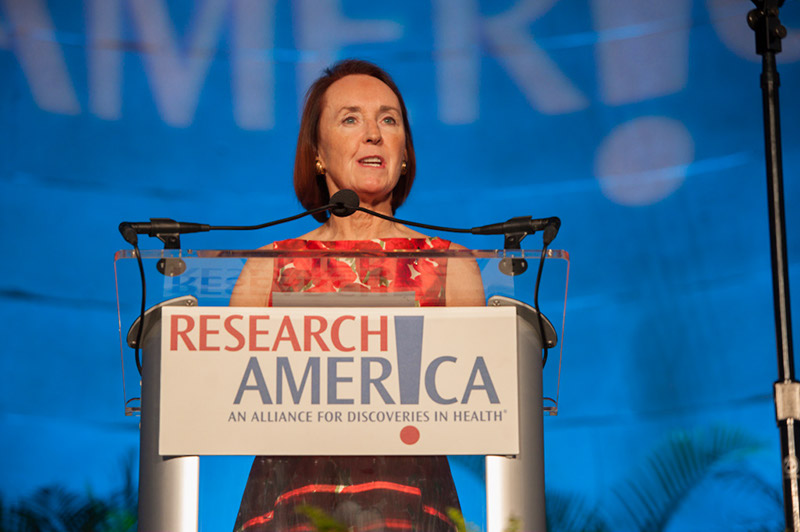Marching for (More) Science

 Dear Research Advocate,
Dear Research Advocate,
The federal budget expires in 15 days. Reportedly, the ink is dry on a fiscal year 2017 (FY17) omnibus bill that includes an additional $2 billion for NIH ($1.7 billion for the base budget, and $300 million from the 21st Century Cures fund) and modest increases for most other science agencies. However, Office of Management and Budget (OMB) Director Mick Mulvaney tweeted this morning that the President may force a government shutdown if the bill doesn’t reflect his priorities.
If ever there was a time to speak up, it’s now. We cannot condone, through our silence, OMB’s laundry list of proposed reductions to FY17 spending levels, much less the chaos of a government shutdown. We have drafted an organizational sign-on letter for your review. We’ll collect signatures after the omnibus bill is made public (and if it lives up to expectations). Take a look and share broadly, if you would. Once the bill is available, the turnaround for signatures may be short.
If flat funding in FY17 would stall progress, the cuts proposed in the President’s FY18 “skinny” budget would undo it. During today’s Alliance Members meeting/call, budget expert David Reich shared insights on the budget outlook for FY18 and beyond. In two words: not good. Read a Recap and check out David’s slides.
On the bright side, Congress appears to be ignoring the skinny budget, and advocacy can create better outcomes. That’s a key reason the 21st Century Cures Act beat (trampled) the odds to become law, and it’s why efforts like sign-on letters are important. I hope you will take a minute to tweet your appreciation to members of Congress who led FY18 sign-on letters in support of robust funding for key research agencies: @RepMcKinley, @RepSusanDavis, @RepAndreCarson, and @RepPeteKing for NIH, @RepDonBeyer for AHRQ, and @RepMcKinley and @GKButterfield for NSF.
Let me turn to another topic much in the news: prescription drug costs. If you’re following the plethora of bills at the state and federal levels, you know that drug pricing/access is not a flash-in-the-pan issue; change is in the air. When it comes to addressing the byzantine world of health care, the line between constructive and counterproductive is paper thin. Prescription drugs cost money and save money. If policymakers focus on only one side of the ledger, they may divert investment away from life- and cost-saving medical innovation…a pyrrhic victory for patients.
I don’t have answers, but I do have questions. Let me know your thoughts on how to ensure our nation confronts rising health care costs in a manner that spurs innovation rather than starving it. Next Wednesday, The Atlantic is hosting a forum on these topics featuring a formidable group of experts, including Research!America Board members Susan Dentzer and Amy Comstock Rick. Register to attend or view the webcast.
The March for Science in D.C. and at 400 satellite locations around the world, is nine days away. If you plan to attend (even if you don’t), it’s worth considering why gathering in support of science is useful. For me, it’s because enthusiasm is catching, there’s a disconnect between the returns on science and the priority it’s assigned, and invisibility breeds neglect. Others will come at this march from different angles, but it would be ironic – and not in a good way – if the March for Science becomes a partisan protest. There are stalwart champions for science on both sides of the aisle. And science itself is dispassionate. A recent blog post by Troy H. Campbell and Lauren Griffin provides food for thought in this regard.
Last but not least, nominations for Research!America’s 2018 Advocacy Awards are open! Submit your candidate(s) by Friday, May 19, 2017.
Sincerely,
Mary Woolley




